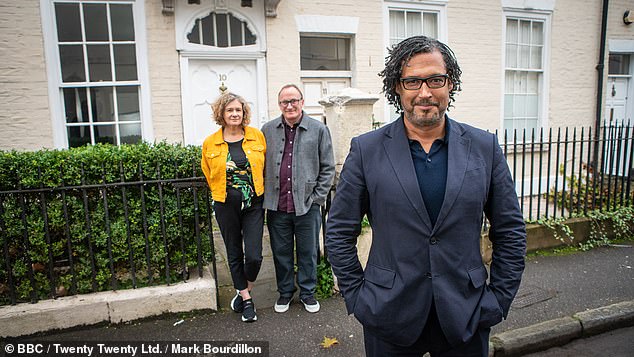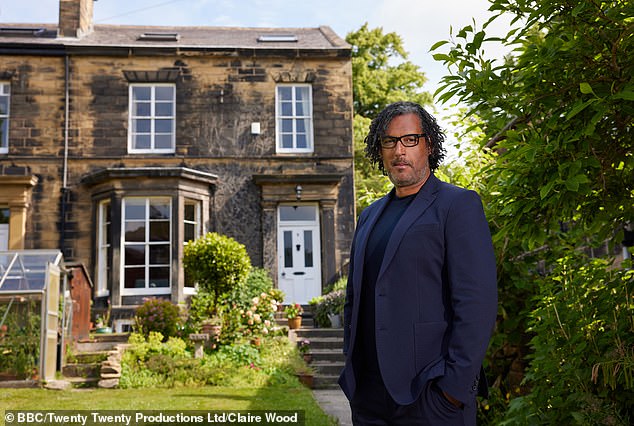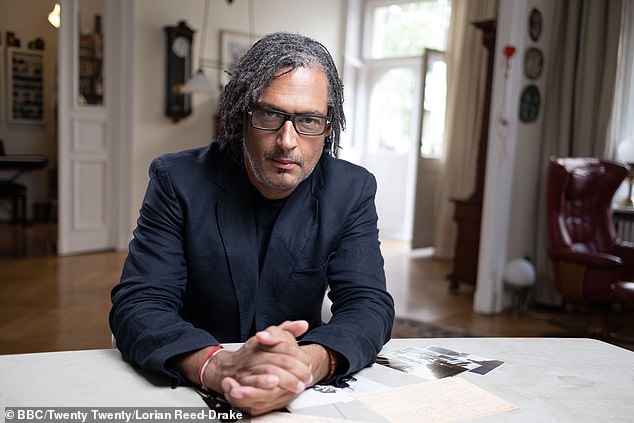CHRISTOPHER STEVENS reviews Last Night’s TV: Prof Olusoga’s disjointed narration makes this WW2 history slow going
A House Through Time: Two Cities at War (BBC2)
History is a sequence. From complete stops. Everything starts and then. Later. Everything ends, what. That’s why historians talk about it. The different periods. From history.
Special. David Olusoga. He uses more points. More full stops. Than any other presenter.
This can get annoying quite quickly, as Prof Olusoga works his way through the script with rhythmic emphasis. By breaking each sentence into chunks of three or four words, he makes each sentence sound emphatic and definitive, until it’s impossible to tell which chunks really matter.
Maybe it’s a hangover from years of teaching students. But nowadays no one takes notes. They all have digital recorders. The professor needs to practice talking faster, and then everyone will have lunch faster.
Partly due to its incoherent story, A House Through Time: Two Cities At War has not really gotten going yet. Despite the opening promise to show us World War II from both sides, we didn’t get past 1938.
David Olusoga in the dining room of Grosvenor Mount House. ‘A House Through Time: Two Cities At War hasn’t really gotten going yet. Despite the opening promise to show us the Second World War from both sides, we didn’t get any further than 1938…’

Karen and David with David Olusoga. ‘The show’s researchers have chosen two similar blocks of flats, one in London’s Marylebone district and the other in Berlin…’

David Olusoga at Grosvenor Mount House
So far Germany is winning. The show’s researchers have picked two similar apartment buildings, one in London’s Marylebone district and the other in Berlin – and the house on Pfalzburger Strasse has the more interesting residents.
One was Albert Henninger, a former World War I aviator who survived being shot down and captured, and later became a technical advisor on early German science fiction films.
Henninger was also a photographer, whose wife, Lisi, modeled for him. They seemed like a golden couple, but in 1928 they divorced for unknown reasons. Olusoga speculated that the breakup may have been caused by Lisi’s Nazi sympathies: she was an early party member.
Their neighbors included a chef, Bonifatius Folli, who came from West Africa to become the Duke of Mecklenburg’s personal chef, and later worked as a language teacher at the University of Berlin.
Folli’s wife, Auguste, was white. The couple must have faced great prejudice, because Boniface applied for a visa to return to his native Togo, then a French colony. In a bitter irony, France refused him permission because he was a German citizen.

David Olusoga in one of the apartments of the building on Pfalzburger Strasse, Berlin – the one with ‘more interesting inhabitants’
Montagu Mansions in London have yet to produce such human drama. Their most interesting resident is Cecil Bernstein, who ran a chain of luxury movie theaters with his brother Sidney.
These include a ‘photo palace’ in Tooting, South London, with seating for 4,000 people. It’s hard to imagine an audience of this size for a film, but social historian Matthew Sweet dropped by to explain that in the Depression years it was often cheaper to spend the evening in the warmth of movies then to have the electric heating on. At home.
A pensioner wrote to Cecil and told him she loved Tooting Granada so much that she went there six times a week. “They all know me there and take care of me,” she said.
Luckily for her, cinema in the 1930s wasn’t all superheroes and zombies.
